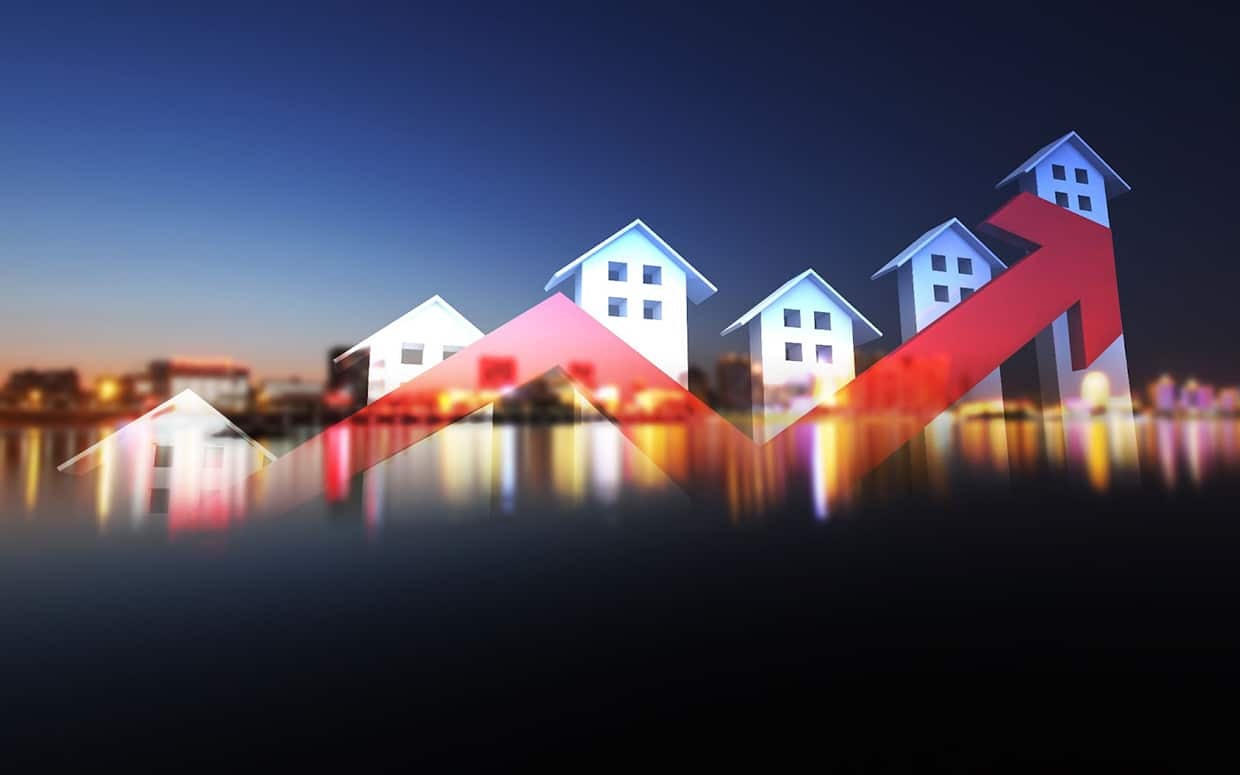At The Close, we always have our finger on the pulse, so we know that some real estate trends come and go, and some change our industry forever. We’ve rounded up our top five real estate topics and trends for this year and predicted how they will impact us and our businesses. Plus, we offer the tools agents will need to capitalize on these changes and take advantage of the opportunities they bring. We expect a healthier market and some mind-blowing tech in the near future.
1. Moving to the Southern States
People are moving to different states more than ever. More specifically, one of the hottest real estate industry trends is people moving to the South. The reasons are simple: strong job markets (plus the ability to work remotely), more space, housing is more affordable, and (typically) one finds a slower pace of life. Storage Cafe did some deep analysis to back up the trend we’re already seeing firsthand in real estate.
- A record number (8.2 million people) moved across state lines in 2022 (the most recent year for data).
- Texas, Florida, North Carolina, and Georgia are in the top five states where people of all ages relocate.
- Connecticut is the only state in the top 10 for relocation that’s not in the sun belt.
- Millennials comprise the largest percentage (34%, or 2.8 million people) of interstate moves.
- The average square footage of a home in the south increased in the past five years to an average of 2,608.
- Moving from California to South Carolina, residents could save an average of $430,000 on a home.

This is a real estate trend here to stay. We will continue to see people of all ages move to find a better quality of life. Southern states will continue to attract those looking for more space at affordable prices. As someone in one of those Southern states, I just ask that you stop honking your car horn.
It will be crucial to ramp up lead generation to capitalize on these shifting demographics. That’s where predictive analytics comes in—data that assesses who’s most likely to sell in the next year with stunning accuracy. We round up our favorite predictive analytic companies in our comprehensive guide, but my favorite is SmartZip. Using 24 data points, they can predict who’s ready to sell a home with 72% accuracy.
2. New Builds Will Alleviate Housing Shortages
There’s no question that the real estate market is (and has been) experiencing severe housing shortages. Just one year ago, supply sat at 2.9 months. The National Association of Realtors’ (NAR) data puts current inventory at 3.2 months, after falling 11.5% from the month before. The inventory data tells agents what they already know: there is none.
But there’s good news on the horizon: the homebuilders of America are coming to the rescue. One of the more exciting real estate industry trends for 2024 is that new home construction is getting back on track. We can trace the roots of the problems we’re encountering today to the housing crisis of 2008. Then, COVID-19 decimated supply chains, and high interest rates made borrowing impractical and expensive.
- According to Realtor.com, “Builders have been catching up, with construction remaining near pre-pandemic highs for single-family and hitting record levels for multi-family.”
- U.S. Census data also shows that privately owned housing units authorized by building permits in December were at a seasonally adjusted annual rate of 1,495,000. This is 1.9% above the revised November rate and is 6.1% above the December 2022 rate.
But we’re finally seeing some positive progress in the homebuilding data. All signs suggest that building multi- and single-family homes is ramping up, which will help alleviate the inventory crisis. This helpful graph shows construction of both multi- and single-family unit construction from 1970 to today, and it’s clear that we’re on the up and up.

For agents, putting more people into more houses and widening the path to homeownership is a meaningful part of our community role. It’s crucial to communicate that there is potentially a much healthier real estate market in 2024, and you are the perfect agent to help. If builders are developing a new community, go out there and meet the developer. With time and thoughtful networking, you could be the go-to agent for that developer’s new builds.
3. Artificial Intelligence (AI) & Augmented Reality (AR)
Of all the trending real estate topics, this is one of the most important to agents. While most of us are still new to these rapidly advancing technologies, it’s clear that AI and AR can positively impact our work. AI is being applied in so many different ways. It’s no wonder it’s one of the top trends in the real estate industry. We’re seeing incredible AI innovation, from crafting marketing scripts and listing copy to virtual staging and lead nurturing. This trend will continue to be one of our favorite hot topics in real estate for 2024.
AR, or the layering of computer-generated images or audio onto our real world, must be understood and applied. LNG Studios imagines how professionals could use AR in real estate in the not-too-distant future.
One of my favorite AR applications is part of a more significant real estate investment trend. Imagine a situation where multiple stakeholders can look at a property or large development project through AR, analyze the pros and cons in real time, and collectively make decisions.
AI and AR are undoubtedly real estate trends here to stay, not just through 2024 but throughout our lifetimes. It’s time for agents to harness this real estate software technology, and we have the resources, tips, and guides to help you wade into these fast-moving, mighty waters. We promise the water is warm!
4. Utopian Societies
We’re unsure what to think of this latest real estate trend. One can certainly understand the desire to create a community that conforms to one’s worldview, and Utopian societies are nothing new. But this multifaceted issue raises as many questions as it answers. As a thought project, it’s fascinating. As a practical exercise in real estate, it’s complicated.
Flannery Associates, a group of Silicon Valley tech moguls, is attempting to create a Utopian 55,000-acre planned community, East Solano. (The founders include Reid Hoffman, co-founder of LinkedIn, and Laurene Powell Jobs, the founder of the Emerson Collective and Steve Jobs’ widow). The dream is to create a community backed by clean energy, sustained by thousands of jobs, with solid public transportation, walkable neighborhoods, plenty of green space, places for kayaking and biking, schools, and shops. They’ve been quietly buying up large parcels of land in a quiet patch of California 60 miles from San Francisco, which has become hotly contested.

While that sounds all well and good, the way this has all played out has raised some serious ethical questions:
- Do the people who already live in Solano want this?
- Was land purchased from people feeling pressure to sell?
- And once news of the project got out, did landowners conspire to drive up prices?
Of course, this isn’t the only attempt to create a Utopian society (there have been many in our nation’s history). Just recently, news broke of a community being built at the other end of the country—another end of the political and cultural spectrum.
From a real estate perspective, it’s complex and fascinating. Yet the further fracturing our society into neighborhoods based on political ideology is frightening. While this real estate trend might continue, as agents, we should continue to work to bring communities together.
5. High Home Prices
We’ve been on a wild trajectory for three years, and the housing market has been a hot topic. Are home prices going to fall or continue to rise? If they fall, will it be off a cliff, or will they drop ever so slightly? Just talking about housing prices is a real estate industry trend!
There’s no question that prices are about as high as we’ve ever seen. DQYDJ has an excellent graph showing the meteoric rise of prices in the past few years:

Our deep data analysis leads us to an optimistic prediction for 2024. We don’t think the market will crash any time soon. But there is potential for a softening of pricing. As mentioned above, new construction is booming, alleviating our inventory stress. The lack of supply has helped to drive prices up and keep them there. But with more houses on the market, prices might dip. That’s good news for buyers.
We don’t think there will be any massive downward swing. That’s good news for sellers. The current median housing price is $382,600. As the NAR points out, this is the sixth month in a row that there has been a year-over-year price increase. It’s still lower than the absolute median peak we hit in June 2022, which was $413,800. So, there has already been a slight correction, and we forecast median prices will continue to hover around this point throughout 2024.
As high housing prices remain, agents must be exceptionally nimble. Lead generation should be a priority, so the sales funnel is always full. You’ll need to get creative with your lead gen strategies and use every tool in your arsenal. We think that 2024 will be a busy one for agents.
Bringing It All Together
Let’s face it: 2023 was a doozy. It was slow, challenging, and confusing. We had to deal with pundits announcing that ChatGPT was replacing our jobs and Sitzer I Burnett all in the same year! Our top picks of real estate industry trends promise a much better 2024. If it’s not better, at least it won’t be dull! Now, pop on those AR goggles and imagine moving to South Carolina—just don’t honk at us.
Predicting any trends we missed?! Take issue with any we’ve identified? Let us know in the comments!









Add comment